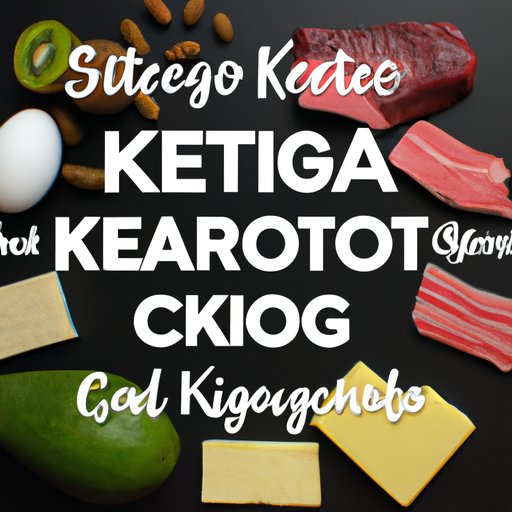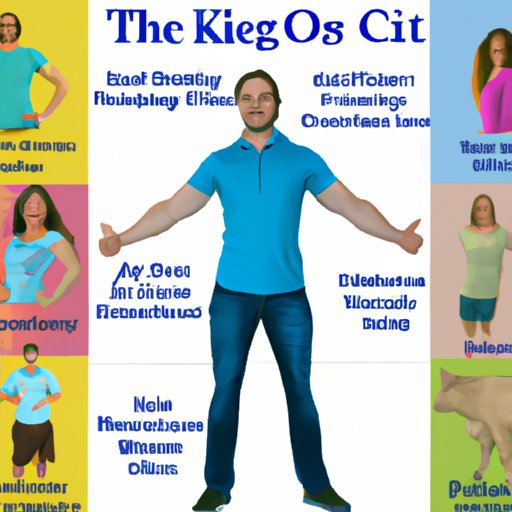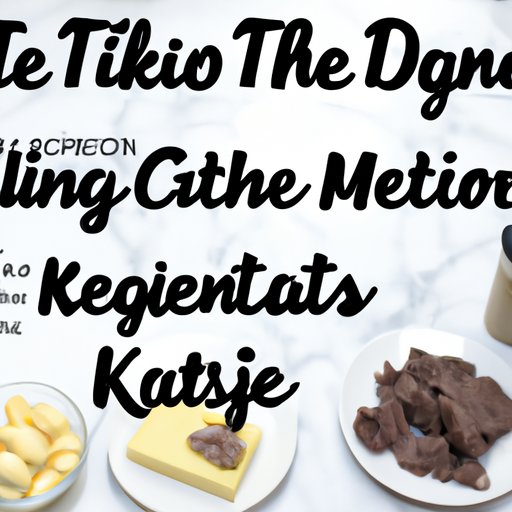Introduction
The ketogenic diet has gained popularity in recent years as an effective way to lose weight and improve overall health. But what exactly is the ketogenic diet and how does it work? This article provides a comprehensive overview of the ketogenic diet, including its definition, benefits, types, meal planning tips, and success stories.

A Comprehensive Guide to the Ketogenic Diet
The ketogenic diet is a high-fat, low-carbohydrate diet that has been used for centuries to treat certain medical conditions. It involves drastically reducing carbohydrate intake and replacing it with fat. When this happens, the body enters a state called “ketosis,” which is when it starts to burn fat for energy instead of carbohydrates.
Understanding How the Ketogenic Diet Works
The ketogenic diet works by forcing the body to use fat as its primary source of energy instead of carbohydrates. This is done by drastically reducing carbohydrate intake and replacing it with fat. When carbohydrates are limited, the body must break down stored fat into molecules known as ketone bodies to use as fuel. This process is called ketosis, and it can lead to increased energy, reduced hunger, and improved mental clarity.
Examining the Nutritional Components of the Diet
The ketogenic diet typically consists of 75% fat, 20% protein, and 5% carbohydrates. Foods that are high in fat and low in carbs include avocados, nuts, seeds, olive oil, butter, and fatty fish. Protein sources can include meat, poultry, eggs, and dairy. While carbohydrates are limited, non-starchy vegetables like broccoli, spinach, and kale are allowed in moderation.

Exploring the Various Types of Ketogenic Diets
The standard ketogenic diet (SKD) is the most common type of ketogenic diet. It is a very low-carb, moderate-protein, and high-fat diet. It typically consists of 75% fat, 20% protein, and only 5% carbohydrates. The SKD is often recommended for those who are just starting out on the ketogenic diet.
The targeted ketogenic diet (TKD) is similar to the SKD but allows for more flexibility when it comes to carb intake. With the TKD, you are allowed to consume more carbohydrates around your workout window. This can be beneficial for athletes or those looking to build muscle.
The cyclical ketogenic diet (CKD) is a more advanced version of the TKD. It involves cycling between periods of higher and lower carbohydrate intake. During the higher carbohydrate phases, you are allowed to eat more carbs than you would on the SKD or TKD. This type of diet can be beneficial for those looking to maximize their performance in the gym.
Identifying Potential Risks and Side Effects
While the ketogenic diet is generally safe for healthy adults, there are some potential risks and side effects that should be considered. These include constipation, fatigue, headaches, bad breath, and decreased exercise performance. It is also important to note that the ketogenic diet can be difficult to stick to and may not be suitable for everyone.

Meal Planning Tips for the Ketogenic Diet
Meal planning is an important part of any diet, and the ketogenic diet is no exception. Here are some basic meal planning strategies to help you get started:
Basic Meal Planning Strategies
When it comes to meal planning for the ketogenic diet, it’s important to focus on nutrient-dense foods. Start by writing down a list of meals and snacks that you enjoy eating. Then, make sure each meal contains a balance of proteins, fats, and carbohydrates. Strive to include a variety of healthy whole foods in your diet.
Analyzing Macronutrients
Once you have your list of meals and snacks, it’s time to analyze the macronutrients. Aim for 75% of your calories from fat, 20% from protein, and 5% from carbohydrates. You can use online calculators to help you determine the exact amounts of each macronutrient needed for your individual goals.
Suggested Foods to Eat
When it comes to choosing the right foods for the ketogenic diet, it’s important to focus on quality. High-quality foods include grass-fed meats, wild-caught fish, organic eggs, nuts, seeds, and non-starchy vegetables. Avoid processed and refined foods as much as possible.
Creating Balanced Meals
Once you have a list of nutrient-dense foods, it’s time to create balanced meals. Try to include a protein, fat, and carbohydrate source in every meal. For example, a breakfast of eggs, bacon, and avocado would be a great option. Snacks can be as simple as a handful of nuts or a piece of fruit.

Success Stories of People on the Ketogenic Diet
There are many success stories of people who have successfully lost weight and improved their health on the ketogenic diet. One study found that overweight adults who followed a ketogenic diet for 24 weeks lost an average of 13.2 pounds (6 kg). Additionally, those on the diet experienced improvements in triglyceride levels and HDL cholesterol levels.
Real-Life Examples of People Who Have Benefited from the Diet
In addition to research studies, there are countless real-life examples of people who have achieved amazing results on the ketogenic diet. From athletes to everyday individuals, many have seen significant improvements in their health and well-being after following the diet.
Motivational Quotes from Those Who Have Succeeded on the Diet
Here are some motivational quotes from those who have succeeded on the ketogenic diet:
“I’m amazed at how quickly I saw results on the keto diet. My energy levels have never been higher and I feel better than ever.” – Joe, age 37
“I had tried so many other diets before, but nothing worked until I tried the ketogenic diet. I’ve lost 30 pounds and my blood sugar is finally under control.” – Sarah, age 53
Conclusion
The ketogenic diet is a powerful tool for losing weight and improving health. It involves drastically reducing carbohydrate intake and replacing it with fat. This puts the body in a state of ketosis, which allows it to burn fat for energy instead of carbohydrates. There are several different types of ketogenic diets, each with its own set of benefits and potential risks. Meal planning is an essential part of the ketogenic diet, and it involves focusing on nutrient-dense foods, analyzing macronutrients, and creating balanced meals. Finally, there are many success stories of people who have seen amazing results on the ketogenic diet.
In conclusion, the ketogenic diet is a versatile and powerful tool for weight loss and improved health. With proper guidance and dedication, anyone can experience the benefits of this unique diet.
(Note: Is this article not meeting your expectations? Do you have knowledge or insights to share? Unlock new opportunities and expand your reach by joining our authors team. Click Registration to join us and share your expertise with our readers.)
